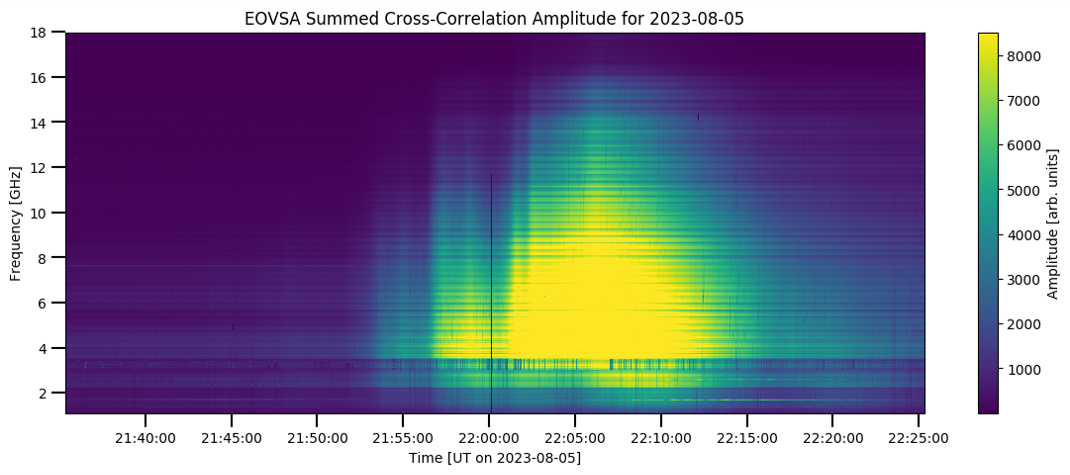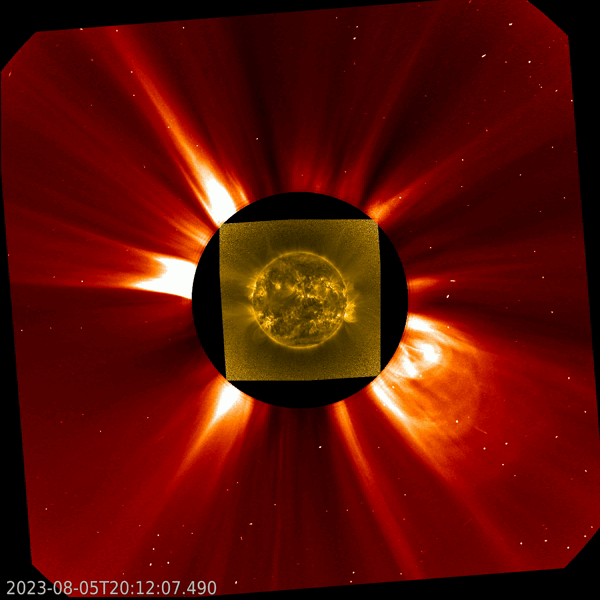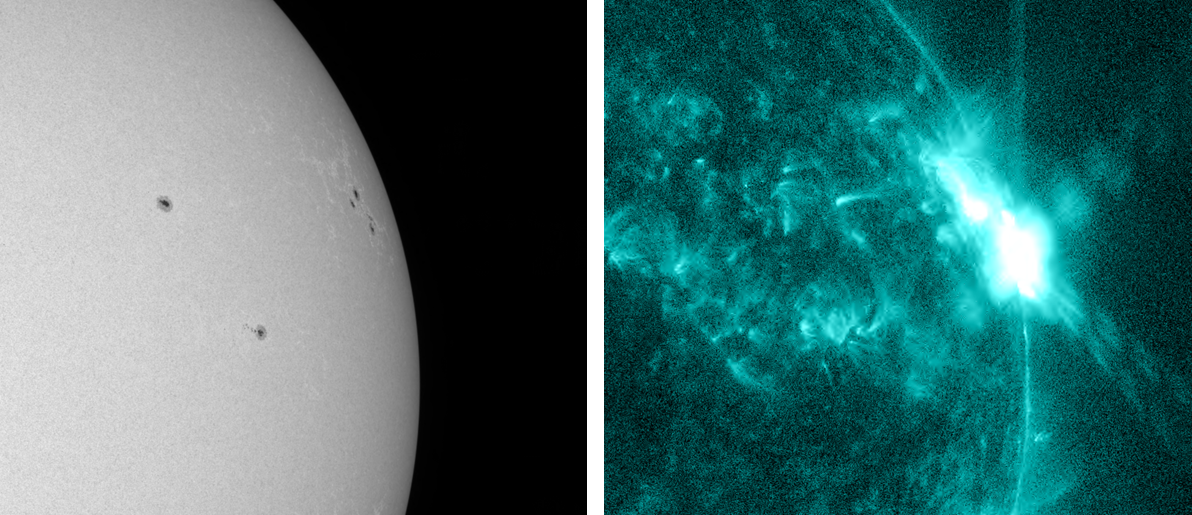Please scroll down for updates on the X-class flaring activity by NOAA 3386.
Increasingly flare active region NOAA 3386 produced a strong X1.6 flare starting at 21:45UTC and peaking at 22:21 UTC on 5 August. The PROBA2/SWAP images (with off-disk enhanced corona) underneath show the delicate coronal structures above the active region prior to the flare, the flare itself, and the post-eruption coronal loops following it.

The enhanced x-ray flux affected High Frequency (HF) communication above the Pacific (D-RAP ; map). A minor solar radiation storm was recorded, with the proton flux peaking at 01:40 UTC on 6 August (17 pfu; GOES plot). This corresponds with a minor influence on HF radio communication over the polar caps, continuing on an earlier event from 5 August (M1.6 flare also from NOAA 3386). The flaring event was also associated with strong radio bursts at various wavelengths, as shown underneath in the Owens Valley dynamic radiospectrogram (OVSA). In particular frequencies between 4 and 9 GHz were affected. Most of these radio bursts seemed to have occurred prior to the flare's x-ray peak, i.e. between 21:50 and 22:20 UTC (NOAA/USAF reports attribute these to NOAA 3392).

Radio observations also indicated a shock travelling through the Sun's outer atmosphere, indicative of a coronal mass ejection (CME). SOHO/LASCO C2 coronagraphic images show this halo CME already from 22:12 UTC onwards, with a speed around 1300 km/s (CACTus). The bulk of this CME is not earth-directed, but an earth-directed component can be expected to deliver a glancing blow early on 8 August, following shortly after the earlier, slightly slower CME associated with the M1.6 flare. Further analysis by the SIDC SWx forecasters is ongoing. The clip underneath is a combination of the PROBA2 imagery (extreme ultraviolet) and the SOHO coronagraphic images (white light), covering the period from 20UTC on 5 August until 03UTC on 06 August. The noise in the images is from the protons impacting on the camera pixels.

UPDATE: NOAA 3386 produced another X-class flare on 7 August
Despite being located well behind the northwest solar limb, NOAA 3386 managed to produce its second X-class flare in as many days. This eruption was in many ways very similar to the 5 August event, differing only in the details. It was a bit weaker (X1.5 vs X1.6), a bit shorter (48 minutes vs 59 minutes), and taking place just a few hours earlier in the day peaking at 20:46UTC (vs 22:21 UTC). The small difference in timing slightly shifted the potential area for HF communication disturbances towards the east, with now mainly North-America and the western portion of the Pacific affected. The imagery underneath (SDO) shows the Sun in white light (left) and in extreme ultraviolet (right; AIA 131) at the time of the flare's peak in soft x-rays (20:46 UTC). It clearly shows that nearby active region NOAA 3387/3393, itself the source of an M1 flare just an hour earlier, was not responsible for the X-class event that clearly happened just beyond the solar limb.

The flare was also accompanied by a minor proton event that is still in progress at the time of this writing, but seems to be leveling off near a value of 27 pfu (GOES plot), slightly stronger than the 5 August event (17 pfu). The impact is pretty much the same, with HF communications over the poles only being slightly affected. The flaring event was also associated with strong radio bursts at various wavelengths, in particular frequencies around 0.2 GHz and between 4 and 9 GHz were affected. Most of these radio bursts seemed to have occurred around the flare's x-ray peak (NOAA/USAF reports).
A partial halo coronal mass ejection (CME) was recorded by coronagraphs on board SOHO. The CME was first seen at 20:48UTC, and CACTus gives a plane-of-the-sky speed slightly above 1000 km/s. In view of the location of the source region, it is unlikely that the earth environment will receive a glancing blow from this CME. The clip underneath shows SOHO/LASCO C3 coronagraphic images from 5 till 8 August. All significant CMEs that can be seen in these images are related to eruptive activity from NOAA 3386, i.e. the long duration M1 event and the X1 flare on 5 August, the M5 flare on 6 August, and the second X1 flare on 7 August.






